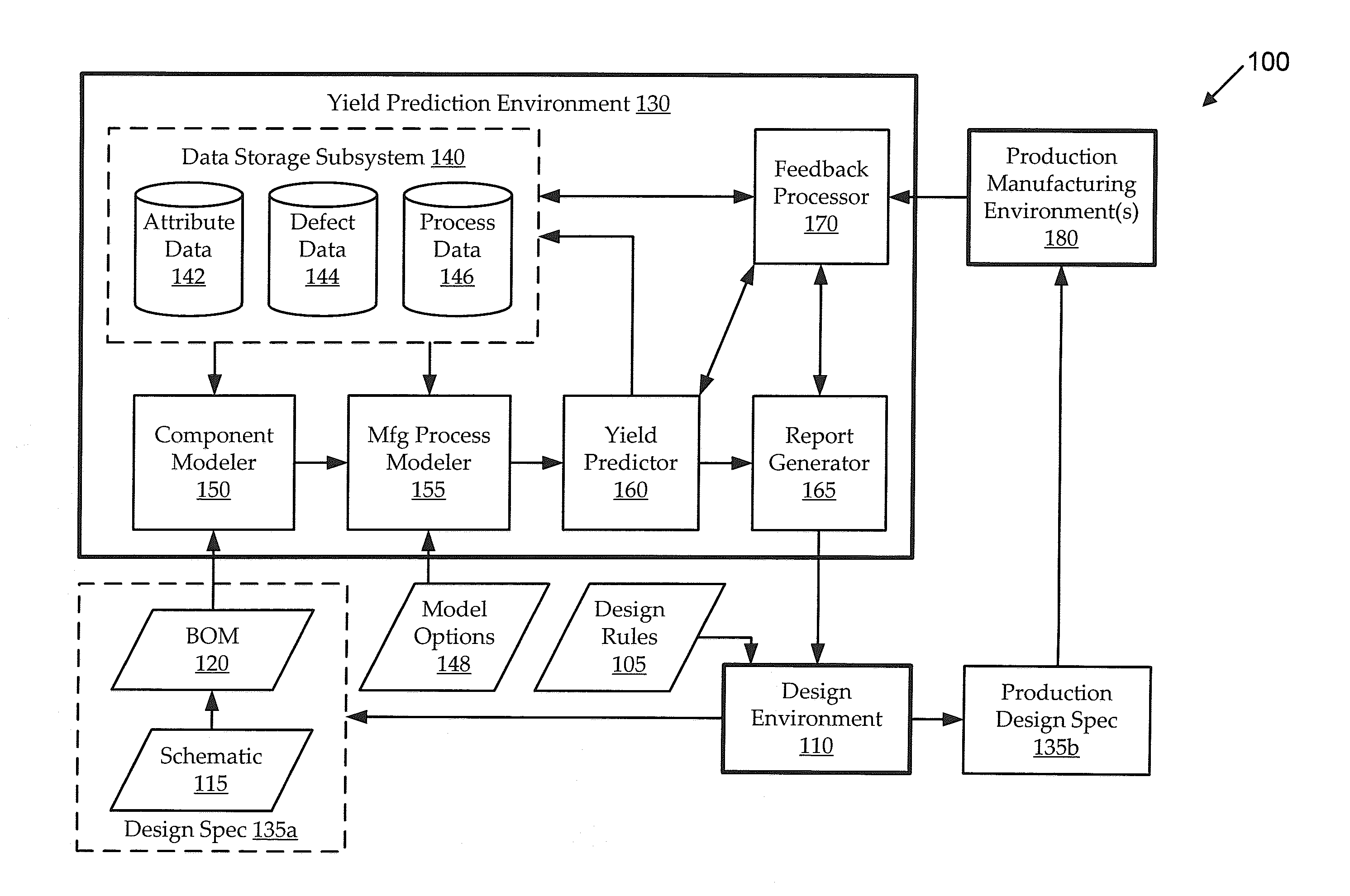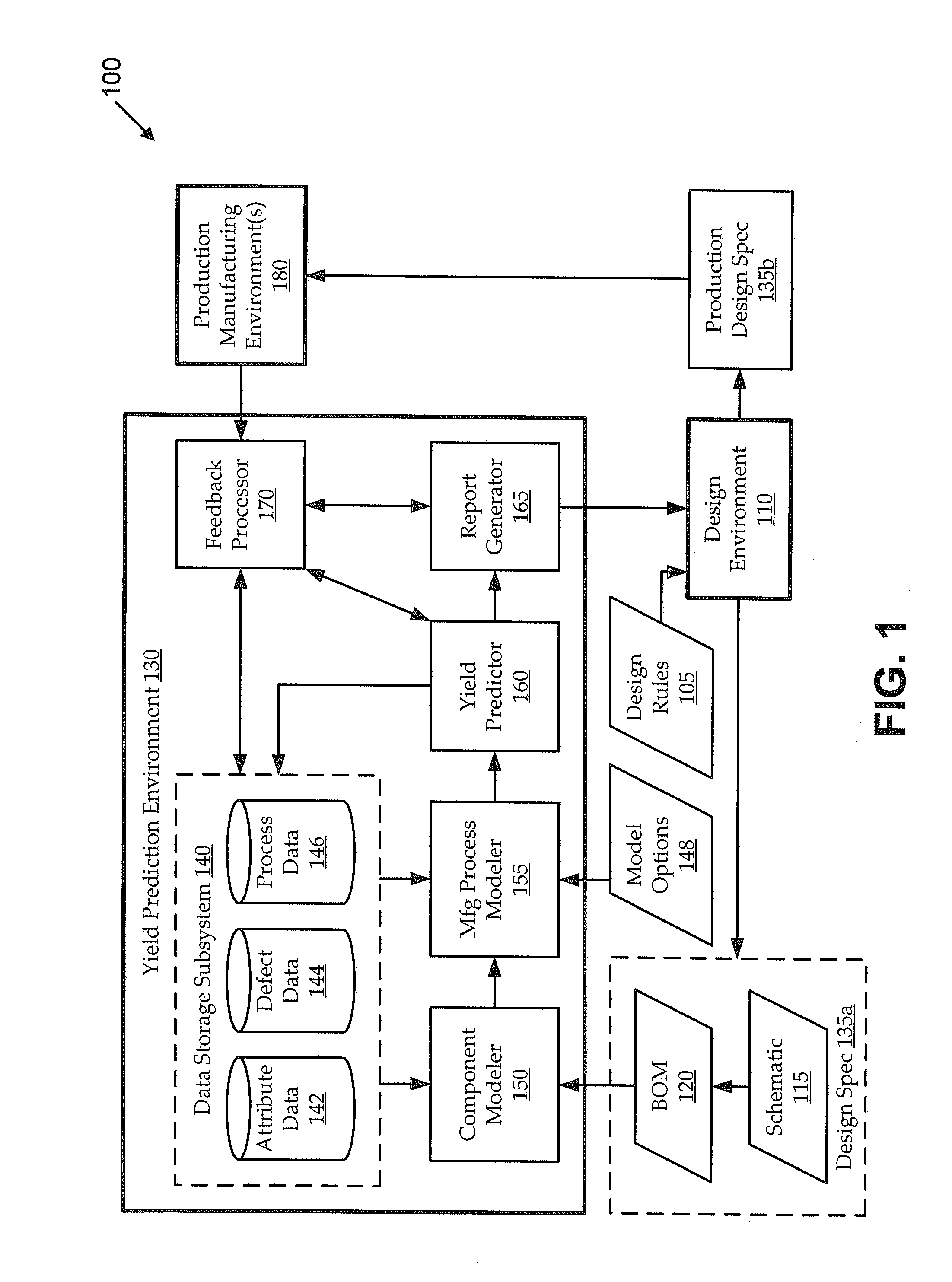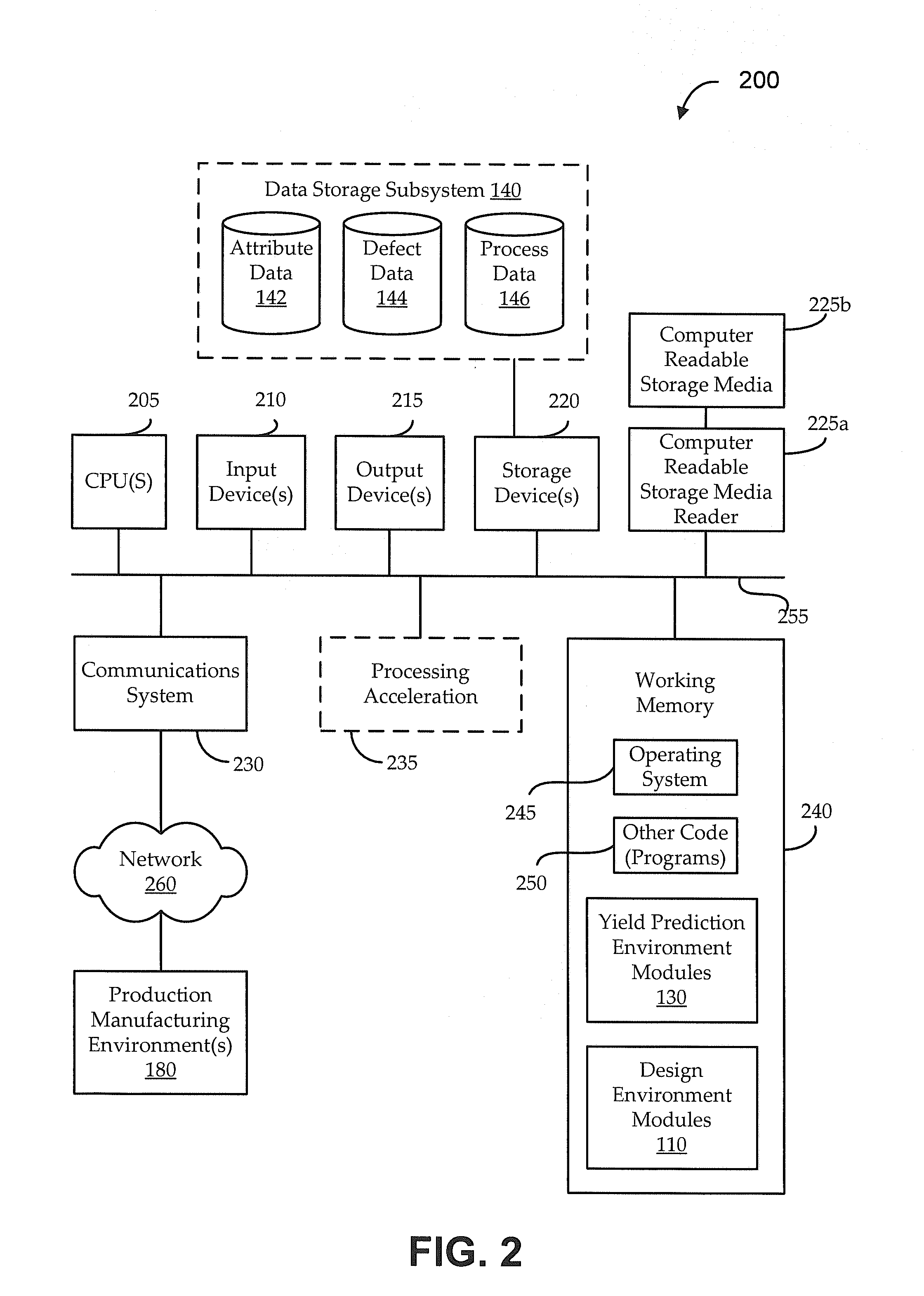Circuit assembly yield prediction with respect to manufacturing process
a technology of manufacturing process and yield prediction, applied in the field of tools for predicting the yield of circuit assembly, can solve the problems of many prediction techniques failing to account for many, difficult yield prediction, and possible failure scenarios of circuit assembly
- Summary
- Abstract
- Description
- Claims
- Application Information
AI Technical Summary
Benefits of technology
Problems solved by technology
Method used
Image
Examples
Embodiment Construction
[0017]It is often desirable to design electronic circuit assemblies with an eye toward the manufacturing environment in which the circuit assembly will be produced. Even a circuit assembly that is designed to have highly reliable electrical functionality may be manufactured in various ways with widely varying practical yields. However, accurately predicting those yields is typically impractical or impossible using traditional yield prediction techniques, which tend to ignore many of the large number of potentially relevant variables. For example, the manufacturing yield for a particular circuit may be appreciably impacted by selections of component parts to perform certain functionality (e.g., component reliability, lead type, packaging constraints, power constraints, etc.), placement and / or arrangement of those components in the circuit assembly (e.g., including rotation and / or pitch of the components), form factor (e.g., size and shape) constraints of the circuit assembly, carrier...
PUM
 Login to View More
Login to View More Abstract
Description
Claims
Application Information
 Login to View More
Login to View More - R&D
- Intellectual Property
- Life Sciences
- Materials
- Tech Scout
- Unparalleled Data Quality
- Higher Quality Content
- 60% Fewer Hallucinations
Browse by: Latest US Patents, China's latest patents, Technical Efficacy Thesaurus, Application Domain, Technology Topic, Popular Technical Reports.
© 2025 PatSnap. All rights reserved.Legal|Privacy policy|Modern Slavery Act Transparency Statement|Sitemap|About US| Contact US: help@patsnap.com



